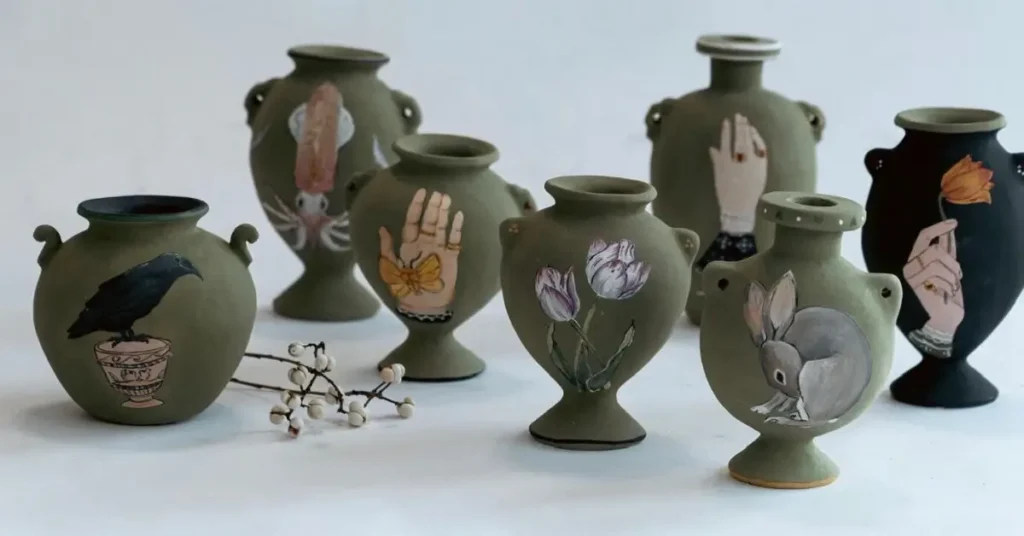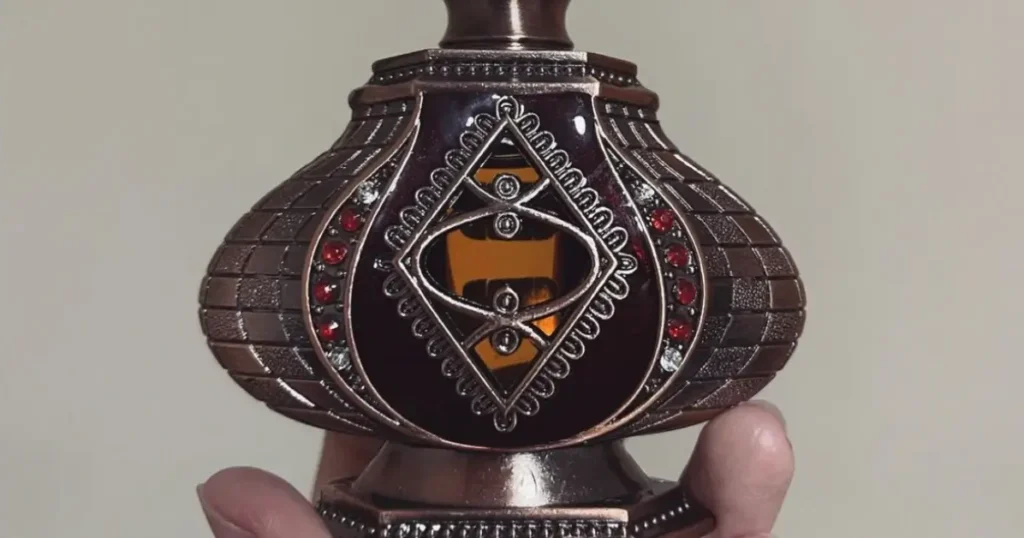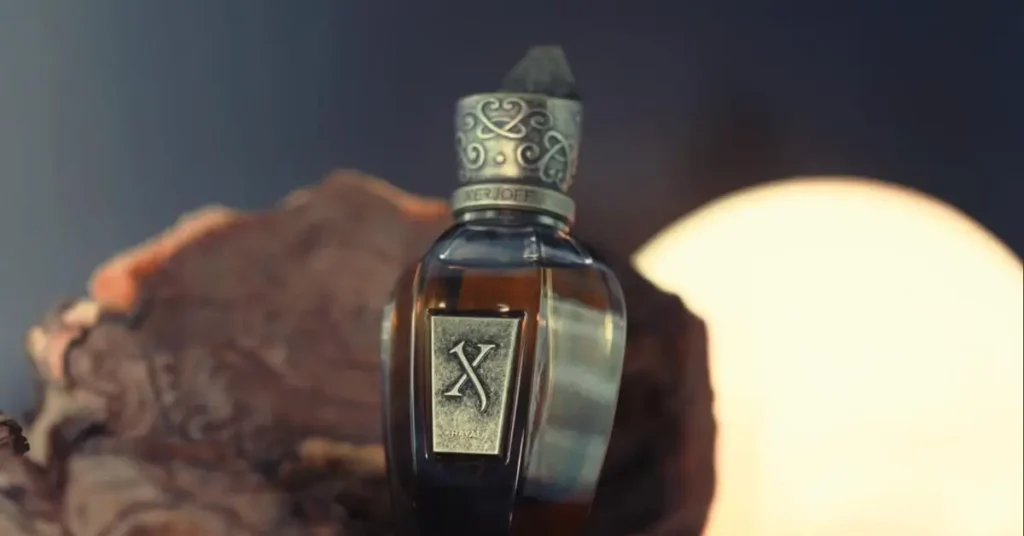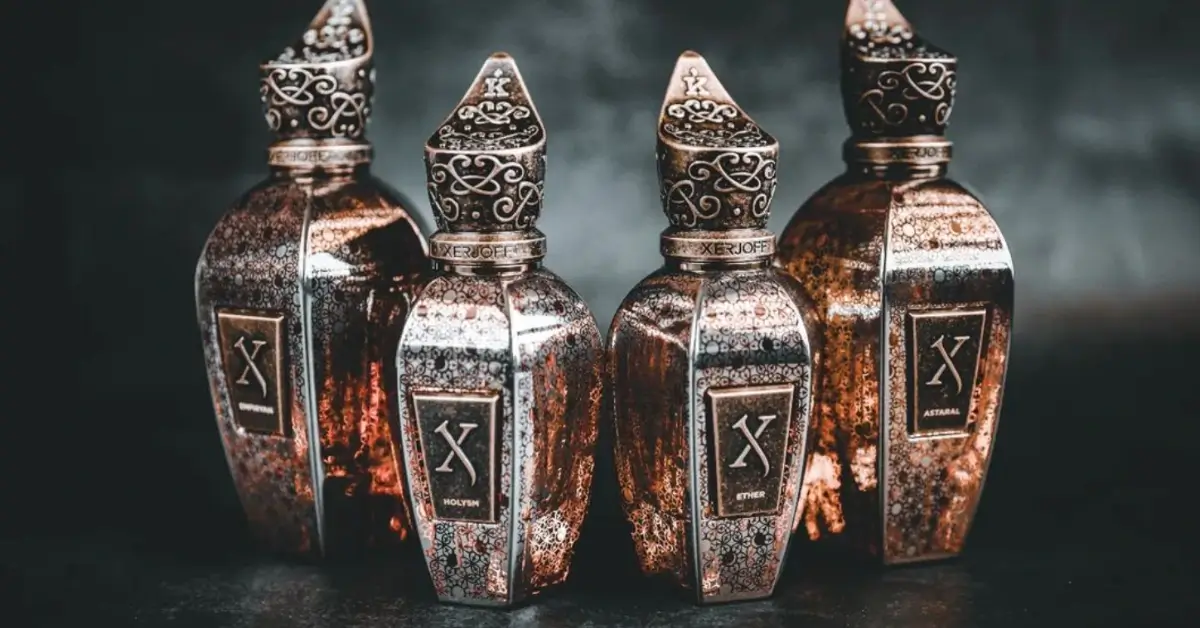For thousands of years, perfume has been integral to human culture, as evidenced by ancient perfume containers that highlight their significance in various societies. These vessels were not just practical holders for scents but also artistic masterpieces that mirrored the aesthetic and cultural standards of their times. The captivating history of perfume vials, ranging from ancient Egypt to Greece and Rome, offers profound insights into those who crafted and used them.
In ancient Egypt, perfume was an essential part of daily life, and perfume bottles were crafted from precious materials such as travertine marble or faience. These bottles were often decorated with intricate designs and hieroglyphics, making them not only functional but also beautiful objects of art. Perfume bottles were also used as offerings to the gods, and their symbolic significance was deeply ingrained in Egyptian culture.
Similarly, in ancient Greece and Rome, perfume was a luxury item that was used not only for its fragrance but also for its medicinal properties. The creation of small narrow-necked spherical vases called aryballos made the direct application of creams and oils on the skin possible and very popular in the Roman Baths. The perfume bottles of this era were often made of glass and featured intricate designs that reflected the artistic and cultural values of these civilizations.
Origins of Perfume Bottles
Perfume bottles have been around for thousands of years, with evidence of their use dating back to ancient civilizations such as Egypt and Mesopotamia. The earliest perfume bottles were made of stone or pottery and were often shaped like animals or other decorative objects. These bottles were used to store oils and other fragrances, which were used for both religious and cosmetic purposes.
As glassmaking techniques developed, glass became the preferred material for perfume bottles due to its transparency and ability to be molded into intricate shapes. The Romans were known for their elaborate glass perfume bottles, many of which have survived to this day. These bottles often featured intricate designs and were decorated with precious stones and metals.
During the Middle Ages, perfume bottles were made of a variety of materials, including gold, silver, and even shells. The use of perfume declined during this time, however, due to the belief that strong scents could spread disease.
It wasn’t until the Renaissance that perfume began to regain popularity, and with it, the use of perfume bottles. These bottles were often made of glass and featured elaborate designs, such as those produced by the famous glassblowers of Venice.
Today, perfume bottles are not only functional but also works of art. They come in a wide range of shapes and sizes, from simple glass vials to ornate, multi-colored bottles adorned with jewels and other decorative elements. The history of perfume bottles is a testament to the enduring appeal of fragrance and the artistry of those who create them.
Materials Used in Ancient Perfume Bottles

When it comes to ancient perfume bottles, several materials were used to create these delicate vessels. In this section, we will take a closer look at the three main materials used in ancient perfume bottles: clay, glass, and metal.
Clay
Clay was one of the earliest materials used to make perfume bottles. The ancient Egyptians, for example, created perfume bottles from faience, which is a type of ceramic material. These vessels were often molded into intricate shapes and decorated with colorful glazes. The ancient Greeks and Romans also used clay to make perfume bottles, but they tended to be more simple in design.
Glass
Glass was another popular material used to make perfume bottles in ancient times. The Romans, in particular, were known for their glassblowing techniques, which allowed them to create intricate and delicate perfume bottles. These bottles were often decorated with intricate designs and patterns, and some were even made using techniques like cameo glass, which was a luxury item afforded only by the wealthy.
Metal
Finally, metal was another material used to make perfume bottles in ancient times. The ancient Egyptians, for example, created perfume bottles from gold and silver, often decorating them with precious stones and intricate designs. The ancient Greeks and Romans also used metal to create perfume bottles, with silver and bronze being the most common materials.
Design and Aesthetics of Ancient Perfume Bottles
Ancient perfume bottles were not only functional but also highly decorative. The design and aesthetics of these bottles varied greatly depending on the era and region they were produced in.
In ancient Egypt, perfume bottles were often made of alabaster or glass and decorated with intricate designs and hieroglyphics. These bottles were often tall and slender with a narrow neck and a wide base. They were designed to be both beautiful and practical, with the narrow neck helping to control the amount of perfume that was dispensed.
In ancient Greece, perfume bottles were often made of glass and were decorated with intricate patterns and designs. These bottles were often small and delicate, with a narrow neck and a wide base. They were designed to be both functional and beautiful, with the narrow neck helping to control the amount of perfume that was dispensed.
During the Roman Empire, perfume bottles were often made of glass or ceramic and were decorated with intricate designs and patterns. These bottles were often small and delicate, with a narrow neck and a wide base. They were designed to be both practical and beautiful, with the narrow neck helping to control the amount of perfume that was dispensed.
In the Islamic world, perfume bottles were often made of glass or metal and were decorated with intricate geometric patterns and calligraphy. These bottles were often small and delicate, with a narrow neck and a wide base. They were designed to be both functional and beautiful, with the narrow neck helping to control the amount of perfume that was dispensed.
Functionality and Use

Ancient perfume bottles were not only beautiful but also functional. Perfumes and oils were stored in these bottles to keep them safe and prevent them from evaporating. The bottles were made from various materials, including clay, terracotta, and glass.
The use of perfume in ancient times was not only for personal hygiene but also for religious purposes and to mask unpleasant odors. Perfumes were also used to signify social status and wealth. In ancient Egypt, for example, perfume was considered a luxury item and was used by the wealthy and royalty.
Perfume bottles were designed to be portable, and some were even worn as jewelry. The bottles were also designed to be refillable, and some were made with a stopper or a lid to prevent the perfume from spilling.
The designs of ancient perfume bottles were often intricate and ornate. Some bottles were shaped like animals or people, while others were decorated with precious stones or gold. The designs of the bottles were often influenced by the culture and time period in which they were made.
In addition to storing perfumes, ancient perfume bottles were also used to store other liquids, such as medicines and oils. Some bottles even had multiple compartments for different types of liquids.
Cultural Significance
Ancient perfume bottles were more than just vessels to hold fragrances. They were often intricately designed and decorated, serving as symbols of wealth and status. In many cultures, perfume was considered a luxury item and was used in religious ceremonies, as well as for personal hygiene.
In ancient Egypt, perfume was an important part of daily life. The Egyptians believed that fragrances had magical and therapeutic properties and used them to ward off evil spirits and promote good health. Perfume bottles were crafted from a variety of materials, including glass, alabaster, and precious metals. The bottles were often decorated with intricate carvings and hieroglyphics, making them works of art in their own right.
During the Roman Empire, perfume was seen as a symbol of wealth and power. Perfume bottles were often made from glass, which was a relatively new material at the time. Glassblowers in Rome produced vials and ampoules to hold perfume, and many of these bottles were decorated with intricate designs and patterns.
In the Middle Ages, perfume was used to mask unpleasant odors, which were common in cities and towns. People carried small perfume bottles with them to freshen their breath and clothing. These bottles were often made from materials such as pewter, silver, and gold, and were decorated with intricate designs and engravings.
Ancient Perfume Designs from Today
When it comes to ancient perfume bottles, the designs were often intricate and beautiful. Many of these designs have influenced modern perfume bottles and packaging. Here are some examples of ancient perfume designs that are still popular today.
K COLLECTION from Xerjoff

One example of a modern perfume that draws inspiration from ancient designs is the K COLLECTION by Xerjoff. This collection features fragrances that are inspired by ancient Asian and Middle Eastern cultures. The packaging for these fragrances is also inspired by ancient designs, with intricate patterns and luxurious materials.
The K COLLECTION features several fragrances, including “Kobe”, “Kamchatka”, and “Kashan Rose”. Each fragrance is inspired by a different culture and features unique notes and accords. For example, “Kamchatka” is inspired by the rugged landscape of the Kamchatka peninsula in Russia and features notes of Siberian pine, birch, and sandalwood.
The packaging for the K COLLECTION is just as luxurious as the fragrances themselves. Each fragrance comes in a handcrafted bottle that is made from Murano glass and features intricate patterns and designs. The bottles are then placed in a velvet-lined box that is adorned with gold accents.
Overall, the K COLLECTION from Xerjoff is a great example of how ancient perfume designs continue to inspire modern fragrances and packaging. Whether you’re a fan of ancient history or just appreciate beautiful design, the K COLLECTION is definitely worth checking out.
FAQ
What is the oldest perfume bottle?
The oldest perfume bottle dates back to the Bronze Age, around 1500 BC. It was discovered in Cyprus and is made of alabaster. The bottle is decorated with a carved bird on the stopper and has a long, thin neck with a small opening. This type of bottle was typically used for holding precious oils and perfumes.
What were old perfume bottles called?
Old perfume bottles were often called “scent bottles” or “perfume vials.” They were typically made of glass, metal, or porcelain and were often decorated with intricate designs. In the 18th century, perfume bottle design really flourished, with goldsmiths, jewellers, glassmakers, and creators of porcelain figurines vying with each other to decorate perfume bottles.
What are Egyptian perfume bottles?
Egyptian perfume bottles were delicate and beautifully crafted as symbolic vessels for the wealthy to keep with their personal cosmetics. These vessels could be carved from stones such as travertine marble or molded from faience (a type of ceramic used in luxury items). They were often decorated with intricate designs and could be quite small, as they were intended to be carried around in a purse or pocket.
Are antique perfume bottles worth money?
Antique perfume bottles can be worth a significant amount of money, especially if they are rare or in excellent condition. The value of an antique perfume bottle depends on a number of factors, including its age, condition, and rarity. Some collectors are willing to pay thousands of dollars for a rare or unique antique perfume bottle. If you have an antique perfume bottle that you think might be valuable, it’s a good idea to have it appraised by a professional.
If you liked this blog post about the topic: ancient perfume bottles, don’t forget to leave us a comment down below to tell us about your experience with it. If you still have a ancient bottle like this, check out our post on how to decant perfume to give those old bottles some more use and meaning and keep the history.

